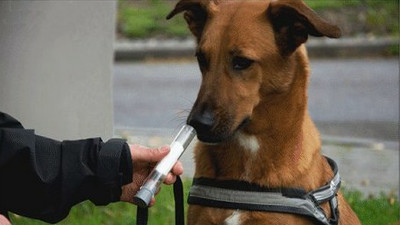Research to detect oral cancer by connecting electrodes to the brain and antennae of live locusts

by
Since changes in human constitution also affect secreted chemical substances, research is being conducted to make dogs with a good sense of smell determine the presence or absence of cancer and to distinguish those infected with the new coronavirus . increase. A research team at Michigan State University has shown how to use the brain and touch of locusts to detect oral cancer in the mouth.
Harnessing insect olfactory neural circuits for noninvasive detection of human cancer | bioRxiv
https://www.biorxiv.org/content/10.1101/2022.05.24.493311v1
Using a locust's brain and antennae to detect mouth cancer
https://phys.org/news/2022-06-locust-brain-antennae-mouth-cancer.html
'Breathing analysis', which detects diseases by detecting volatile organic chemicals (VOCs) present in the blood and airways of the body from the breath, is a non-invasive test method that does not require injection or surgery. In recent years, VOCs that are thought to be related to several cancers such as lung cancer and breast cancer have already been found, and are expected to lead to early detection of cancer.
However, the concentration of VOCs contained in exhaled breath is one millionth to one trillionth, and it is very difficult to develop a sensor for detecting VOCs contained in exhaled breath in such a small amount. .. Therefore, the use of dogs, which have a sharp sense of smell hundreds of thousands of times that of humans, is being considered, and an 'electronic nose' that combines a dedicated high-sensitivity sensor and system is being developed.
An electronic nose will be developed that can discover 'people who are prone to esophageal cancer' simply by analyzing the breath of a person --GIGAZINE

A research team at Michigan State University has researched how to use the tactile sensation of locusts, which have a large tactile sensation and can sense chemical changes in the surrounding air.
The research team's experiments are very simple: take alive brains from 5 year old male and female locusts and implant electrodes. Then, it is exposed to VOCs that volatilize from cancer cells and the brain waves at that time are measured.

According to the research team, cancer cells can be identified as cancer cells from VOCs because their metabolism for energy production is different from normal cells. A total of three types of cancer cells were used, one collected from the human gums and the other collected from the tongue.
Of the images below, the bottom three are oral cancer cells. The top 'HaCaT' is a normal epidermal keratinocyte prepared for control.

As a result of the experiment, it was found that the brain waves of locusts differ between cancer cells and normal cells, and it was successful in detecting cancer cell-derived VOCs in the locust tactile sensation and brain. The research team argues that the advantage of this method is that the detection time is 250 milliseconds at the longest and the detection work is completed in an instant.
The research team commented, 'This is the first time we have detected cancer using the brain of a living insect.' With this method, it seems that it is necessary to use 6 to 10 locusts to obtain the signal necessary for the system to detect cancer, but the research team will proceed with further research and use the locust brain. We are planning to reduce it to one animal. The research team hopes that hopefully the cancer detection system could be made portable and compact.
Related Posts:






